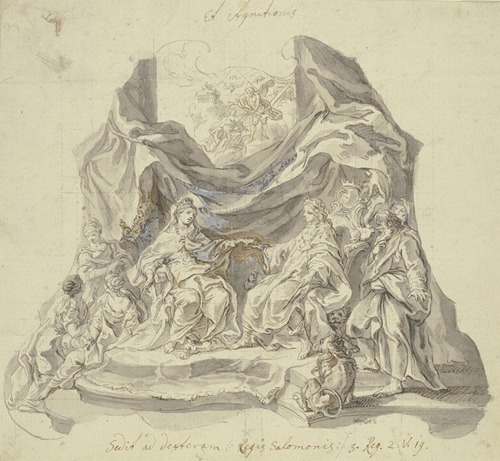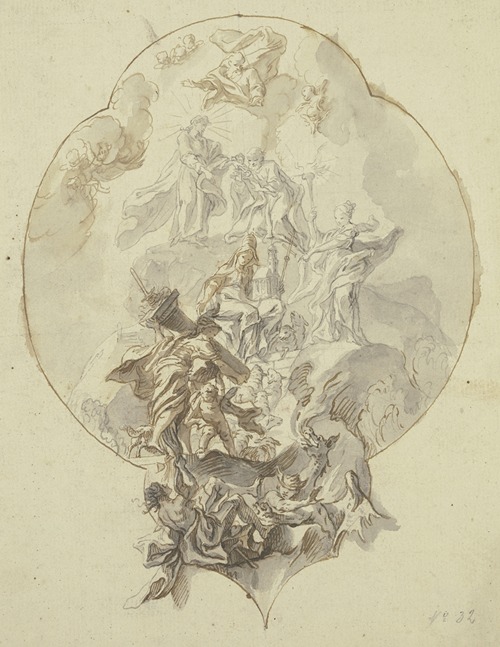
Franz Martin Kuen
Franz Martin Kuen was a German Rococo painter.
Kuen was born in what is now the house at Hauptstrasse 22 in Weißenhorn. The father, Johann Jakob Kuen, founded a painting workshop here, where his fourth son learned the craft. The painter received further training from Johann Georg Bergmüller in Augsburg, with whom he also executed the frescoes for the Church of the Assumption of Mary in Dießen am Ammersee. According to Josef Strasser, Franz Martin Kuen learned in Augsburg from Bergmüller's student Johann Georg Wolcker in Augsburg. In this way he indirectly received Bergmüller's work.
From 1745 to 1747 Kuen stayed in Italy, where he was influenced by Giovanni Battista Tiepolo's painting style. After his return, he set up his own workshop in Weißenhorn in 1748. The painter's main activity focused on the surrounding area of Central Swabia. Kuen's main surviving works include the ceiling fresco in the library hall of Wiblingen Monastery, the frescoes in the Roggenburg monastery church and the 23 frescoes in the parish church of St. Martinus in Erbach (Donau).
The painters Johann Baptist Enderle and Konrad Huber were students of Kuen. Huber married Kuen's widow and continued his workshop.
The Wengen provost Michael Kuen was his brother. The artist was appointed to this monastery by his uncle, Provost Johann Braunmüller, around 1743. Kuen was busy, a good businessman and self-confident: on the ceiling of the chapel of the Vöhlin Castle in Illertissen he depicted himself with Baron Joseph von Vöhlin, in Wiblingen he looks over the shoulders of Alexander the Great in one of his paintings.
With his wife, the merchant's daughter Maria Anna Würth, Kuen had 14 children, of whom only four survived him. On a trip to Prague, where he was supposed to become director of the academy, he died of typhus in Linz on January 30, 1771, at the age of 52.

